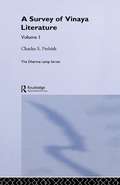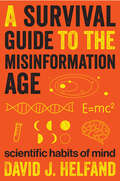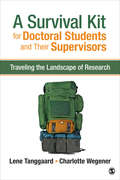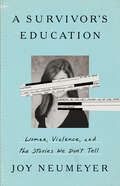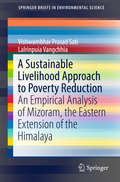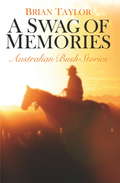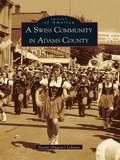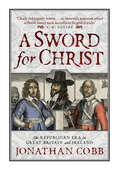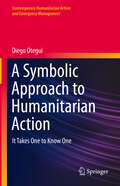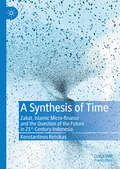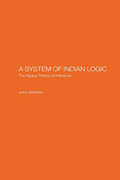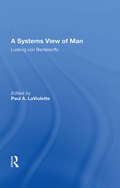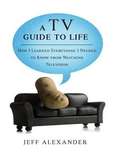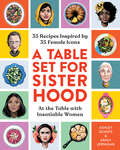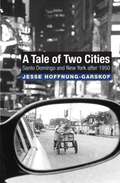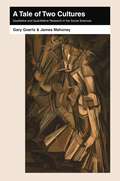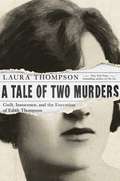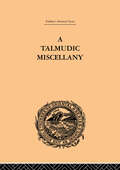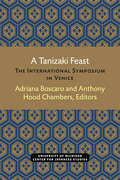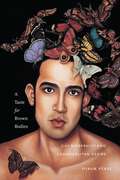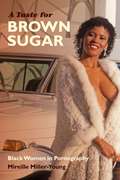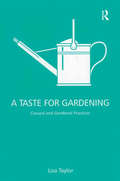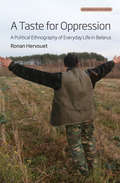- Table View
- List View
A Survey of Vinaya Literature (Routledge Critical Studies in Buddhism #Vol. 1)
by Charles S. PrebishThe most important research tool for vinaya studies. Covers both primary and secondary sources in Sanskrit, Pali, Tibetan, and Chinese as well as modern sources in English, French, German and Japanese.
A Survival Guide to the Misinformation Age: Scientific Habits of Mind
by David J. HelfandLearning how to tell news from fake news from fake fake news: An &“important and timely&” book on protecting ourselves, and society, from the infodemic (Library Journal). We have billions of bytes of data at our fingertips. But how much of it is misinformation—or even disinformation? A lot of it is, and your search engine can&’t tell the difference. As a result, an avalanche of misinformation threatens to overwhelm the discourse we so desperately need to address complex social problems such as climate change, the food and water crises, biodiversity collapse, and emerging threats to public health. This book provides an inoculation against the misinformation epidemic by cultivating scientific habits of mind. Anyone can do it—indeed, everyone must do it if our species is to survive on this crowded and finite planet. This survival guide supplies an essential set of apps for the prefrontal cortex while making science both accessible and entertaining. It will dissolve your fear of numbers, demystify graphs, and elucidate the key concepts of probability, all while celebrating the precise use of language and logic. David Helfand, one of our nation&’s leading astronomers and science educators, has taught scientific habits of mind to generations in the classroom, where he continues to wage a provocative battle against sloppy thinking and the encroachment of misinformation. &“Provides a vital antidote to the ills of misinformation by teaching systematic and rigorous scientific reasoning.&” —The Times Literary Supplement
A Survival Kit for Doctoral Students and Their Supervisors: Traveling the Landscape of Research
by Charlotte Wegener Professor Lene TanggaardA Survival Kit for Doctoral Students and Their Supervisors offers a hands-on guide to both students and supervisors on the doctoral journey, helping make the process as enjoyable as it is productive. Drawing on research from peer learning groups, contributed narratives, and their own programs, authors Lene Tanggaard and Charlotte Wegener emphasize the value of the doctoral partnership and the ways in which shared knowledge can facilitate a rewarding journey for students and their advisors. Grounded in theoretical and empirical material, the book helps participants navigate the doctoral process with personal stories and examples from a variety of researchers. A discussion of common challenges and the inclusion of practical tips further enhance the book’s diverse range of helpful resources.
A Survival Kit for Doctoral Students and Their Supervisors: Traveling the Landscape of Research
by Charlotte Wegener Professor Lene TanggaardA Survival Kit for Doctoral Students and Their Supervisors offers a hands-on guide to both students and supervisors on the doctoral journey, helping make the process as enjoyable as it is productive. Drawing on research from peer learning groups, contributed narratives, and their own programs, authors Lene Tanggaard and Charlotte Wegener emphasize the value of the doctoral partnership and the ways in which shared knowledge can facilitate a rewarding journey for students and their advisors. Grounded in theoretical and empirical material, the book helps participants navigate the doctoral process with personal stories and examples from a variety of researchers. A discussion of common challenges and the inclusion of practical tips further enhance the book’s diverse range of helpful resources.
A Survivor's Education: Women, Violence, and the Stories We Don't Tell
by Joy NeumeyerA timely memoir about intimate abuse, campus politics, and the narratives we choose to believe In this poignant self-investigation, historian and journalist Joy Neumeyer explores how violence against women is portrayed, perceived, and adjudicated today. Interweaving the harrowing account of the abuse she experienced as a graduate student at Berkeley with those of others who faced violence on campus and beyond, Neumeyer offers a startling look at how the hotly-debated Title IX system has altered university politics and culture, and uncovers the willful misremembrance that enables misconduct on scales large and small. Deeply researched, daringly inquisitive, and resonant for our times, A Survivor's Education reveals the entanglement of storytelling, abuse, and power–and how we can balance narrative and evidence in our attempts to determine what &“really&” happened.
A Sustainable Livelihood Approach to Poverty Reduction: An Empirical Analysis of Mizoram, the Eastern Extension of the Himalaya (SpringerBriefs in Environmental Science)
by Vishwambhar Prasad Sati Lalrinpuia VangchhiaThis book presents a socio-economic and livelihood analysis of agriculturally-dependent communities of Mizoram, the eastern extension of the Himalaya, using the sustainable livelihood approach. Such an approach to poverty reduction is inevitable, particularly, in areas where livelihoods depend largely on biomass-based agriculture and livestock production. Mizoram possesses abundant natural resources - land, water and forest - but those resources are largely unused. The region suffers from chronic poverty and malnutrition, and climate change has further influenced livelihood patterns. This work studies all the aspects of natural potentials and livelihood status in Mizoram. It also discusses the major driving forces that influence livelihood patterns. Based on a detailed analysis of empirical data, several policy measures are suggested to cope with chronic poverty and malnutrition. The book is therefore highly useful for all stakeholders; students, researchers, academicians, policy makers and politicians involved in rural/community development.
A Swag of Memories: Australian Bush Stories
by Brian TaylorA quintessential Australian bushman, Brian Taylor has spent most of his life on the land. Working as a drover, a stockman, a fencer, a shearer and a saddler, he has gathered a swag of stories over the years as he travelled way out past the Barcoo, along the dusty plains and beside the dry creek beds under the endless southern sky. In A SWAG OF MEMORIES Brian Taylor shares with us these stories, of the people he has met, the places he has been and the moments, long-gone, that define the traditions of the Australian bush. Like those bush poets and storytellers of days past, Taylor brings to life the characters and the creatures of the bush: men like Dangerous Dan Smith, a hard, self-reliant man who had a gentler talent; Father Peter, a parish priest and occasional hero; Charlie Gibson, an Aboriginal stockman who knew the land better than anyone; and Banjo, the ever-alert dingo watchdog. These colourful and evocative bush tales delightfully capture a slight of Australian life that many of us will never get to see. Luckily, with this collection, you can sit back with a billy of tea and read all about it.
A Swiss Community in Adams County
by Naomi Eugene LehmanIn the mid-19th century, many Swiss families fled their homeland in order to avoid the rigid restrictions placed on religious and political beliefs. Many found solace in the little town of Berne, Indiana, and in the surrounding communities of Adams County. In 2002, Berne will celebrate 150 years of settlement and growth. In preparation, Naomi Lehman has compiled a unique visual history of these family-oriented communities, chronicling the history of the rich ancestral Swiss Emmenthaler culture that is still alive in the area today. Most of Adams County's early settlers hailed from Switzerland's capital of Bern, located in the Canton of Bern, and made the capital the namesake of their new home. The heavily forested and swampy land was cleared and tiled. Homes were constructed, churches flourished, and family businesses opened, some still existing today. Captured here in over 200 vintage images are the trials and triumphs of a classic Swiss community, including photographs of early farming families, industries and businesses, churches, and schools, blanketing not just Berne, but Geneva, Decatur, Linn Grove, and Monroe in Adams County, as well as Bluffton and Vera Cruz in neighboring Wells County.
A Sword for Christ: The Republican Era in Great Britain and Ireland
by Jonathan CobbThe fifteen-year period between 1645 and 1660 was one of the most dynamic in British history, during which the republican Commonwealth and Cromwellian Protectorate attempted to create a new type of ‘Godly’ state after the execution of Charles I. Drawing on the latest research and established sources, as well as the works and diaries of contemporaries such as John Evelyn, Lucy Hutchinson and Samuel Pepys, A Sword for Christ offers a new and stimulating perspective on these extraordinary years. Key personalities such as Sir Thomas Fairfax, the Marquis of Argyll, Charles II and, of course, Oliver Cromwell himself – one of the most contentious figures in history – are re-appraised and brought vividly to life. In addition to exploring the religious and political debates which shaped the era and the military culture which defined it, the book also considers how society was profoundly affected by the upheaval caused by the civil wars; the relations between what was essentially an English republic and its Irish and Scottish neighbours; and the ethos of the New Model Army and the navy.
A Symbolic Approach to Humanitarian Action: It Takes One to Know One (Contemporary Humanitarian Action and Emergency Management)
by Diego OteguiThis book aims to present an alternative view of humanitarian action. It adds to current conversations and dilemmas within the humanitarian sphere by departing from traditional views that consider humanitarian interventions as a concrete human activity aimed at providing relief to disaster victims. Much differently, it invokes the idea that humanitarian action is also a cognitive process. In this process, both humanitarians and disaster survivors alike, unknowingly, apply historically, societally, and culturally defined symbolic constructions to make sense of post-disaster information and to make decisions. In the specific case of humanitarian workers, these symbolic constructions influence how they understand their post-disaster reality, including how they relate to those they consider to be in pain or distress. This way of looking at humanitarian action builds upon a robust theoretical framework called Institutional Logics, which helps us identify and interpret how individuals make sense of their reality. So it brings the complex world of the individual into a discussion that generally considers the organization as the unit of analysis. Studying humanitarian action through this alternative lens makes it easy to see that objective and verifiable post-disaster information is a necessary but not a sufficient condition to design humanitarian interventions, let alone assess their value and benefits. A Symbolic Approach to Humanitarian Action: It Takes One to Know One aims to bridge the gap between research and practice in humanitarian action by translating academic knowledge into an accessible format that can be used by practitioners to improve their work on the ground.
A Synthesis of Time: Zakat, Islamic Micro-finance and the Question of the Future in 21st-Century Indonesia
by Konstantinos RetsikasThis book is an anthropological investigation into the different forms the economy assumes, and the different purposes it serves, when conceived from the perspective of Islamic micro-finance as a field of everyday practice. It is based on long-term ethnographic research in Java, Indonesia, with Islamic foundations active in managing zakat and other charitable funds, for purposes of poverty alleviation. The book explores the social foundations of contemporary Islamic practices that strive to encompass the economic within an expanded domain of divine worship and elucidates the effects such encompassment has on time, its fissure and synthesis. In order to elaborate on the question of time, the book looks beyond anthropology and Islamic studies, engaging attentively, critically and productively with the post-structuralist work of G. Deleuze, M. Foucault and J. Derrida, three of the most important figures of the temporal turn in contemporary philosophy.
A System of Indian Logic: The Nyana Theory of Inference
by John VattankyNyana is the most rational and logical of all the classical Indian philosophical systems. In the study of Nyana philosophy, Karikavali with its commentary Muktavali, both by Visvanatha Nyayapancanana, with the commentaries Dinakari and Ramarudri, have been of decisive significance for the last few centuries as advanced introductions to this subject. The present work concentrates on inference (anumana) in Karikavali, Muktavali and Dinakari, carefully divided into significant units according to the subject, and translates and interprets them. Its commentary makes use of the primary interpretation in Sanskrit contained especially in the Ramarudri and Subodhini. The book begins with the Sanskrit texts of Karikavali and Muktavali; followed by English translation of these texts. Next is given the Sanskrit text of Dinakari which comments on the first two texts, followed by its English translation. Lastly, the book contains a commentary on all the texts included.
A Systems View Of Man: Collected Essays
by Ludwig von BertalanffyWhat does it mean to be human? What distinguishes man from other animals? “Man’s creation of the universe of symbols,†replies Ludwig von Bertalanffy. “Man lives in a world not of things, but of symbols.†Dr. von Bertalanffy explores the historical development of symbolic language, examines the nature of human values, and shows how a current breakdown of symbolic universes contributes to the feeling of meaninglessness so prevalent in modern society. He notes that a major portion of mankind’s aggressive acts are not biologically induced but arise within symbolic frameworks.
A TV Guide to Life
by Jeff AlexanderRead Jeff Alexander's posts on the Penguin Blog. A couch potato's book of wisdom-- 100% commercial free! Some say that entire generations of Americans are being raised by the television...like that's a bad thing. Not so, says author Jeff Alexander, long-time television writer, advocate of education by television, and recapper for the popular website Television Without Pity. Here, he offers the ultimate in life lessons as seen on TV. Topics include: * Saved by the Bell: School on TV * Somebody Save Me: Super Powers and Magic Spells * Tell Me Why I Love You Like I Do: Relationships on TV * Making A Living: The Workplace * And more With a smart, snarky style, Alexander guides readers through important lessons gleaned from years of TV reviewing (now in convenient book form!), freeing up a whole new generation to learn other things, like how to cure cancer or solve world hunger...or anything more useful than watching TV (Author's note: Just joking... there is no such thing).
A Table Set for Sisterhood: 35 Recipes Inspired by 35 Female Icons
by Ashley Schütz Ashly JerniganEmpowering women, deliciously. There is something magical that happens when women come together over food. By sharing our stories and sharing a meal, we are sharing in celebrating women and empowering them. A Table Set for Sisterhood is a fully illustrated, wholly original cookbook that focuses on empowering women by celebrating specific icons who changed history. By introducing these women through the medium of food — a dish related to their work and what they fought for — A Table Set for Sisterhood fuses the arts of storytelling and cooking ... and invites women to share a seat at the table with their favourite feminist icons. The women featured include: Frida Kahlo, Malala Yousafzai, Marsha P. Johnson, Angela Davis, Hayley Wickenheiser, Oprah Winfrey, Amelia Earhart, Ruth Bader Ginsberg, Rupi Kaur, and so many more!
A Tale of Two Cities: Santo Domingo and New York After 1950
by Jesse Hoffnung-GarskofIn the second half of the twentieth century Dominicans became New York City's largest, and poorest, new immigrant group. They toiled in garment factories and small groceries, and as taxi drivers, janitors, hospital workers, and nannies. By 1990, one of every ten Dominicans lived in New York. A Tale of Two Cities tells the fascinating story of this emblematic migration from Latin America to the United States. Jesse Hoffnung-Garskof chronicles not only how New York itself was forever transformed by Dominican settlement but also how Dominicans' lives in New York profoundly affected life in the Dominican Republic.<P> A Tale of Two Cities is unique in offering a simultaneous, richly detailed social and cultural history of two cities bound intimately by migration. It explores how the history of burgeoning shantytowns in Santo Domingo--the capital of a rural country that had endured a century of intense U.S. intervention and was in the throes of a fitful modernization--evolved in an uneven dialogue with the culture and politics of New York's Dominican ethnic enclaves, and vice versa. In doing so it offers a new window on the lopsided history of U.S.-Latin American relations. What emerges is a unique fusion of Caribbean, Latin American, and U.S. history that very much reflects the complex global world we live in today.
A Tale of Two Cultures: Qualitative and Quantitative Research in the Social Sciences
by James Mahoney Gary GoertzSome in the social sciences argue that the same logic applies to both qualitative and quantitative methods. In A Tale of Two Cultures, Gary Goertz and James Mahoney demonstrate that these two paradigms constitute different cultures, each internally coherent yet marked by contrasting norms, practices, and toolkits. They identify and discuss major differences between these two traditions that touch nearly every aspect of social science research, including design, goals, causal effects and models, concepts and measurement, data analysis, and case selection. Although focused on the differences between qualitative and quantitative research, Goertz and Mahoney also seek to promote toleration, exchange, and learning by enabling scholars to think beyond their own culture and see an alternative scientific worldview. This book is written in an easily accessible style and features a host of real-world examples to illustrate methodological points.
A Tale of Two Murders: Guilt, Innocence, And The Execution Of Edith Thompson
by Laura ThompsonA riveting account of the notorious “Ilford murder” by the New York Times bestselling author of The Six <P><P> The death penalty is never without its ethical conflicts or moral questions. Never more so than when the person being led to the gallows may very well be innocent of the actual crime, if not innocent according social concepts of femininity. <P><P>A Tale of Two Murders is an engrossing examination of the Ilford murder, which became a legal cause ce´le`bre in the 1920s, and led to the hanging of Edith Thompson and her lover, Freddy Bywaters. On the night of October 3, 1922, as Edith and her husband, Percy, were walking home from the theatre, a man sprang out of the darkness and stabbed Percy to death. The assailant was none other than Bywaters. <P><P>When the police discovered his relationship with Edith, she—who had denied knowledge of the attack—was arrested as his accomplice. Her passionate love letters to Bywaters, read out at the ensuing trial, sealed her fate, even though Bywaters insisted Edith had no part in planning the murder. They were both hanged. Freddy was demonstrably guilty; but was Edith truly so? <P><P>In shattering detail and with masterful emotional insight, Laura Thompson charts the course of a liaison with thrice-fatal consequences, and investigates what a troubling case tells us about perceptions of women, innocence, and guilt.
A Talmudic Miscellany: A Thousand and One Extracts from The Talmud The Midrashim and the Kabbalah
by Paul Isaac HershonThis is Volume III of six in a series on the Ancient Near East. Originally published in 1880, this is a succinct account of the Talmud with its siz orders (Sedarim), seventy-one Massictoth and 633 Perakim, and 4187 Mishnaoith. A considerable part of the Mishna has been at different times translated into English and other modern languages, and to many theologians it has been known as a whole by the magnificent work of Surenhusius.
A Tanizaki Feast: The International Symposium in Venice (Michigan Monograph Series in Japanese Studies #24)
by Anthony Hood Chambers Adriana BoscaroThis volume presents 18 eighteen essays, written by scholars from six countries, on Tanizaki Jun’ichiro (1886–1965), one of the great writers of the 20th century. The essays were originally prepared for a landmark international symposium in Venice in 1995, at which 22 speakers addressed an audience of about two hundred students and scholars in the Aula Magna of the University of Venice. Topics include Tanizaki’s fiction, plays, and film scenarios; his aesthetics; his place in Japanese intellectual history; his depiction of the West; his use of humor; and film adaptations of his works. In 1964 Tanizaki was elected to honorary membership in the American Academy and Institute of Arts and Letters, the first Japanese to be so honored; and it is widely believed that he was being considered for the Nobel Prize in Literature.
A Taste for Brown Bodies: Gay Modernity and Cosmopolitan Desire (Sexual Cultures #23)
by Hiram PérezWinner, LGBT Studies Lammy Award presented by Lambda LiteraryNeither queer theory nor queer activism has fully reckoned with the role of race in the emergence of the modern gay subject. In A Taste for Brown Bodies, Hiram Pérez traces the development of gay modernity and its continued romanticization of the brown body. Focusing in particular on three figures with elusive queer histories—the sailor, the soldier, and the cowboy— Pérez unpacks how each has been memorialized and desired for their heroic masculinity while at the same time functioning as agents for the expansion of the US borders and neocolonial zones of influence. Describing an enduring homonationalism dating to the “birth” of the homosexual in the late 19th century, Pérez considers not only how US imperialist expansion was realized, but also how it was visualized for and through gay men. By means of an analysis of literature, film, and photographs from the 19th to the 21st centuries—including Herman Melville’s Billy Budd, Anne Proulx’s “Brokeback Mountain,” and photos of abuse at the Abu Ghraib prison—Pérez proposes that modern gay male identity, often traced to late Victorian constructions of “invert” and “homosexual,” occupies not the periphery of the nation but rather a cosmopolitan position, instrumental to projects of war, colonialism, and neoliberalism. A Taste for Brown Bodies argues that practices and subjectivities that we understand historically as forms of homosexuality have been regulated and normalized as an extension of the US nation-state, laying bare the tacit, if complex, participation of gay modernity within US imperialism.
A Taste for Brown Sugar: Black Women in Pornography
by Mireille Miller-YoungA Taste for Brown Sugar boldly takes on representations of black women's sexuality in the porn industry. It is based on Mireille Miller-Young's extensive archival research and her interviews with dozens of women who have worked in the adult entertainment industry since the 1980s. The women share their thoughts about desire and eroticism, black women's sexuality and representation, and ambition and the need to make ends meet. Miller-Young documents their interventions into the complicated history of black women's sexuality, looking at individual choices, however small--a costume, a gesture, an improvised line--as small acts of resistance, of what she calls "illicit eroticism." Building on the work of other black feminist theorists, and contributing to the field of sex work studies, she seeks to expand discussion of black women's sexuality to include their eroticism and desires, as well as their participation and representation in the adult entertainment industry. Miller-Young wants the voices of black women sex workers heard, and the decisions they make, albeit often within material and industrial constraints, recognized as their own.
A Taste for Gardening: Classed and Gendered Practices
by Lisa TaylorIs the garden a consumption site where identities are constructed? Do gardeners make aesthetic choices according to how they are positioned by class and gender? This book presents the first scholarly analysis of the relationship between media interest in gardening and cultural identities. With an examination of aesthetic dispositions as a symbolic mode of communication closely aligned to peoples' identities and drawing on ethnographic data gathered from encounters with gardeners, this book maps a typology of gardening taste, revealing that gardening - how plants are chosen, planted and cared for - is a classed and gendered practice manifested in specific types of visual aesthetics. This timely and original book develops a new area within cultural studies while contributing to debates about lifestyle and lifestyle media, consumption, class and methodology. A must read for anybody concerned with or intrigued by the cultural construction of identification practices.
A Taste for Oppression: A Political Ethnography of Everyday Life in Belarus (Anthropology of Europe #6)
by Ronan HervouetBelarus has emerged from communism in a unique manner as an authoritarian regime. The author, who has lived in Belarus for several years, highlights several mechanisms of tyranny, beyond the regime’s ability to control and repress, which should not be underestimated. The book immerses the reader in the depths of the Belarusian countryside, among the kolkhozes and rural communities at the heart of this authoritarian regime under Alexander Lukashenko, and offers vivid descriptions of the everyday life of Belarusians. It sheds light on the reasons why part of the population supports Lukashenko and takes a fresh look at the functioning of what has been called 'the last dictatorship in Europe'.
A Taste for Oppression: A Political Ethnography of Everyday Life in Belarus (Anthropology of Europe #6)
by Ronan HervouetBelarus has emerged from communism in a unique manner as an authoritarian regime. The author, who has lived in Belarus for several years, highlights several mechanisms of tyranny, beyond the regime’s ability to control and repress, which should not be underestimated. The book immerses the reader in the depths of the Belarusian countryside, among the kolkhozes and rural communities at the heart of this authoritarian regime under Alexander Lukashenko, and offers vivid descriptions of the everyday life of Belarusians. It sheds light on the reasons why part of the population supports Lukashenko and takes a fresh look at the functioning of what has been called 'the last dictatorship in Europe'.
